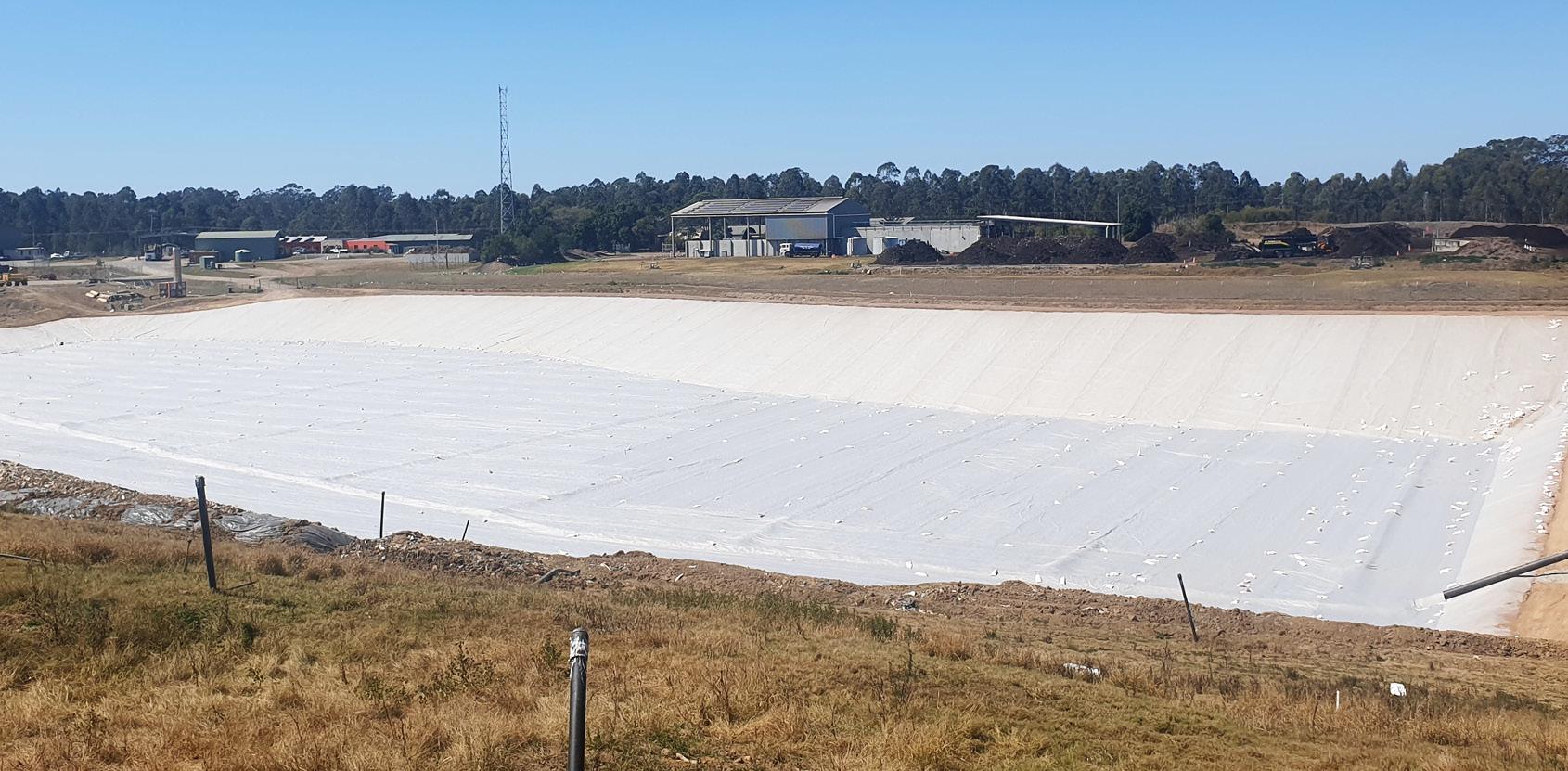
Grafton Landfill Cell 4B

Clarence Valley Council required expansion works at the current Grafton landfill site to meet the wastage demands of the council.
Residents in Clarence Valley produce approximately 10,000 tonnes per year of waste and this new cell to be constructed will ensure the capacity is able to meet demands for the next 4-5 years.
Geofabrics were consulted on the design to determine a suitable grade of cushion geotextile to protect the primary 2 mm HDPE geomembrane liner.
By utilising our cushion testing capabilities at our R&D centre (GRID - Geofabrics Centre for Geosynthetic Research, Innovation & Development), Geofabrics were able to analyse and model the liner profile, incorporating the proposed drainage aggregate rock and HDPE geomembrane.
The cushion testing was conducted in accordance to ASTM D5514 “standard for large scale hydrostatic puncture of Geosynthetics” as required by NSW EPA Solid Waste Guidelines.
After testing different options and various grades, the results demonstrated that a combined layer of Bidim A84NF and Bidim A64NF was able to limit strain to lower than 3% under 470 kPa pressure.
All cushion geotextile supplied was needle-free (as noted in our product code by the term “NF”). Needle-free geotextiles are always used on top of geomembranes to ensure no needles are present in the geotextile that would then (under load from the waste above) create a hole in the liner. Geofabrics has a standard definition of what constitutes needle-free - “needle-free is a roll of geotextile containing no metal greater than 1 mm² ”.
Enviro Lining purchased, supplied and installed the geotextiles for Clarence Valley Council. Enviro Lining first lay the primary HDPE liner followed by a layer of Bidim A84NF and A64NF. The separation layer above the leachate drainage layer was bidim A39NF.
After completion of the installed layers, Terrafirma were appointed to undertake a liner integrity survey of the geomembrane liner. This was to ensure that the liner was unaffected by any damages that may have taken place during placement of aggregate or construction. No damages or holes were detected and as such the newly constructed cell is ready to take waste.
A total of 65,000 m² of Bidim A64NF, A84NF and A39NF were supplied and installed on Grafton Cell 4B.
DOWNLOAD THE CASE STUDY HERE

